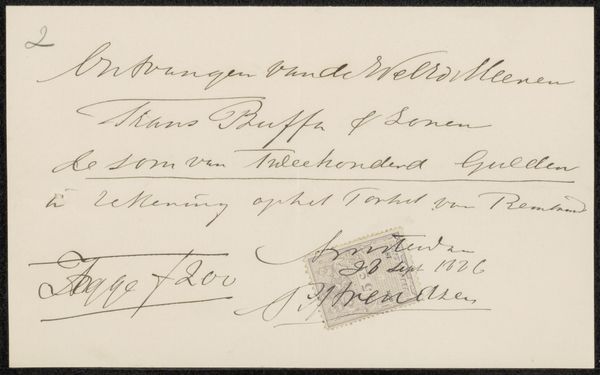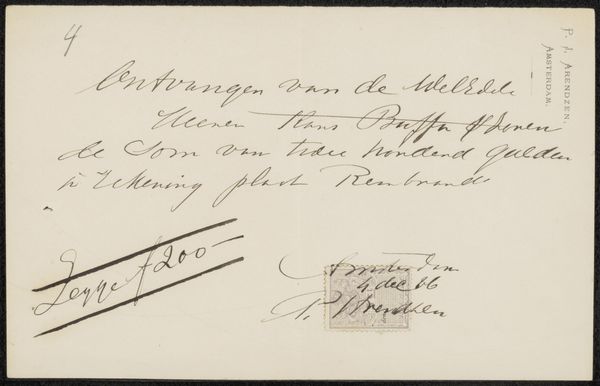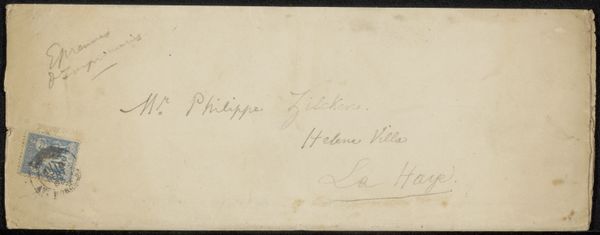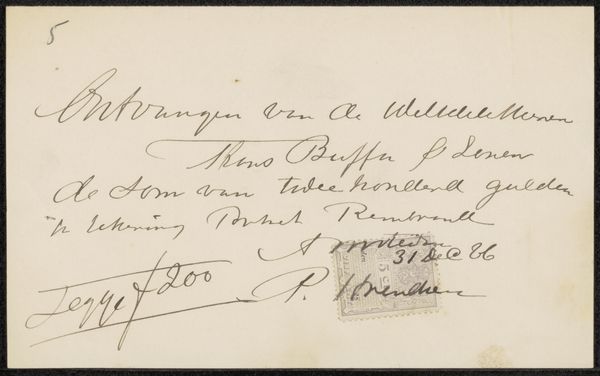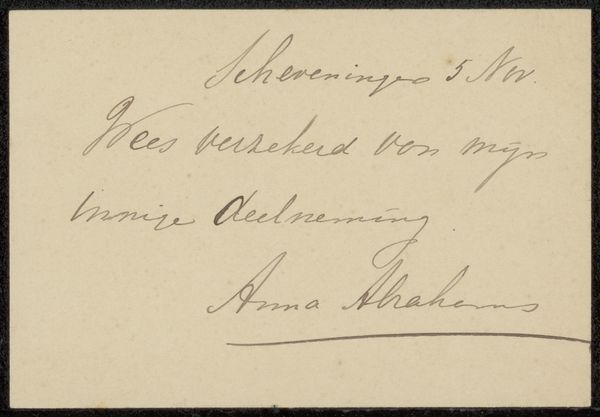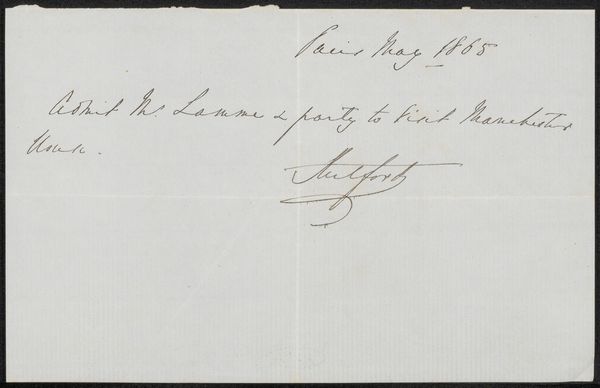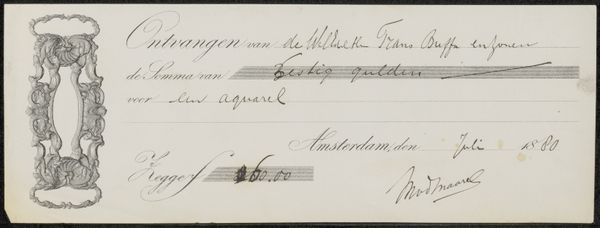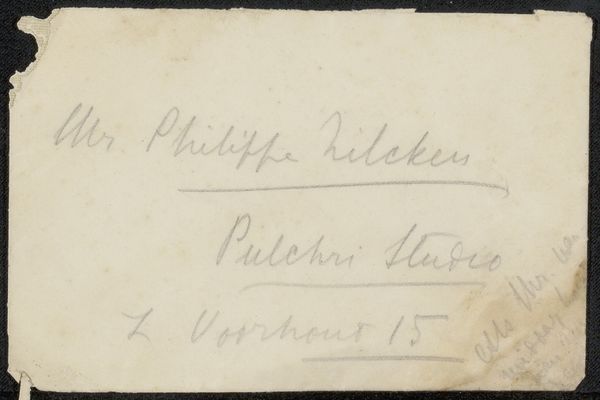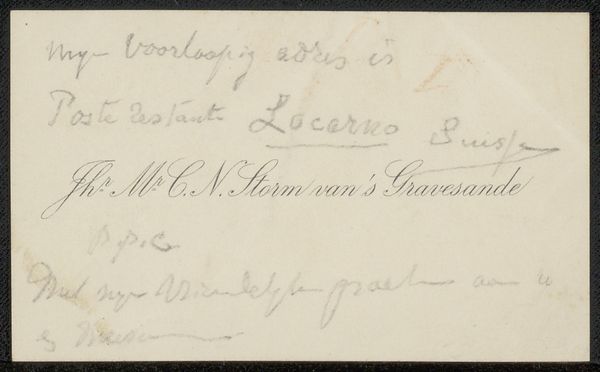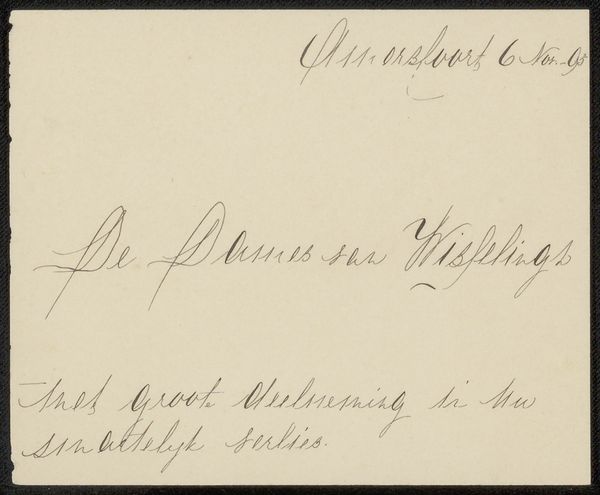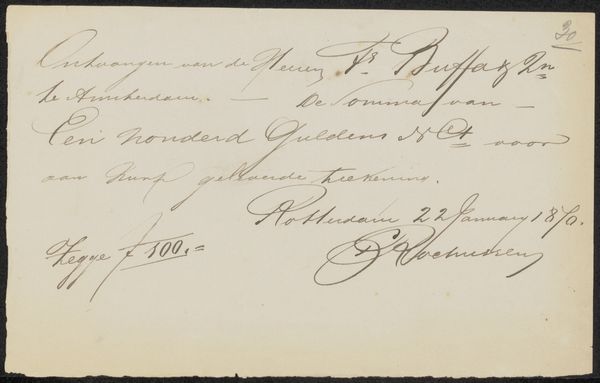
drawing, paper, ink
#
portrait
#
drawing
#
script typography
#
hand-lettering
#
hand drawn type
#
feminine typography
#
hand lettering
#
paper
#
ink
#
hand-written
#
hand-drawn typeface
#
fading type
#
thick font
#
handwritten font
#
modernism
#
realism
Copyright: Rijks Museum: Open Domain
Editor: Here we have “Envelop aan Jan Hoynck van Papendrecht,” created sometime between 1867 and 1927 by Willy Martens. It's ink on paper and held here at the Rijksmuseum. The delicate script gives it such an intimate feel. What stands out to you in this piece? Curator: The visual weight of the script itself commands immediate attention. Notice the deliberate variations in line thickness and the letterforms' overall morphology. The contrast provides a dynamism absent in standardized typography. Observe how the artist’s hand guides the viewer’s eye across the surface of the paper. What words would you use to describe the feeling that gives you? Editor: I see what you mean. It almost feels like it's dancing, the way some lines are bolder than others. What’s interesting is that while clearly functional, addressing an envelope, it takes on this aesthetic quality. Like, it’s more than just getting mail delivered. Curator: Precisely. Dissecting it using structuralist theory, we can decode how the arrangement and relationship of linguistic elements affect its meaning. This disrupts the idea of pure functionality, does it not? Editor: It does. So, focusing on those aesthetic qualities… is that a modernist or realist perspective? Curator: Both, in some respects. Its utility anchors it to realism; but by accentuating style over objective depiction it has an aspect of modernism. Its semiotic value extends beyond its function; it makes you wonder how an envelope can blur the boundaries of style, line, and communication, right? Editor: Yes, it definitely has. It's interesting to see how the everyday can be transformed through artistic interpretation, focusing just on form and composition. Curator: Agreed. I learned something about appreciating form and meaning residing within our everyday use.
Comments
No comments
Be the first to comment and join the conversation on the ultimate creative platform.
